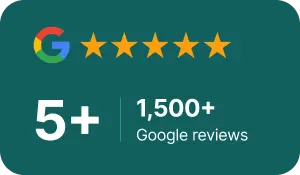When an estate is tied up in probate, an inheritance advance can feel like a life-saver—cash today instead of waiting months or even years for the court to sign off. Yet every funding option comes with a price. Understanding how those prices are calculated—and how they differ from traditional loans—empowers heirs to make a fully informed decision. Below is a deep dive into the fee landscape, from headline “discount rates” to the quieter charges that can lurk in the fine print.
The Core Concept: Flat Discount Fee vs. Compound Interest
Most reputable inheritance-advance providers do not charge interest in the typical sense. Instead, they apply a flat discount fee that represents the funder’s profit for assuming probate risk and waiting for repayment. Think of it as selling a slice of your future distribution at a discount.
In practice that means you know—on day one—the precise dollar amount that will be repaid from your share when probate closes. Whether the estate wraps in six months or sixteen, the repayment cap remains fixed. Compare this with a personal or home-equity loan, where compounding interest can balloon costs if timelines slip.
- Why it matters: A flat fee creates price certainty; you will never owe more than the contract states.
- Watch-out: Some providers disguise compounding charges as “adjustable discounts.” Always demand a one-page payoff schedule showing the exact amount owed at multiple future dates.
How Providers Calculate the Discount
While formulas vary by company, four core variables drive pricing:
- Advance size relative to projected share – A $15,000 advance on a $100,000 inheritance draws a smaller fee than a $40,000 advance on the same share.
- Asset liquidity – Cash in a brokerage account is easier to monetize than a vacant lot in a slow real-estate market, so the former costs less to fund.
- Probate timeline risk – Courts in some states consistently close estates in under nine months; others average eighteen. Longer timelines equal higher fees.
- Legal complexity – Pending will contests, creditor claims, or tax liens raise uncertainty, prompting a higher discount to offset potential delays or losses.
Because every estate is unique, responsible funders quote fees only after reviewing core documents—letters testamentary, inventory, and docket status.
Typical Fee Ranges (and Why They Vary)
Industry-wide, discount fees generally land between 25 % and 45 % of the amount advanced. The broad spread reflects the risk factors above. A solvent estate with liquid assets and no disputes might qualify at the lower end, whereas an advance secured primarily by illiquid real estate could cost closer to the upper bound.
Remember that a discount fee differs from an APR. For example, paying a $3,000 fee on a $10,000 advance equals a 30 % discount, not 30 % annual interest. If probate closes in one year, your effective APR is roughly 30 %. If the estate needs only six months, that APR effectively doubles. This is why flat-fee products work best when certainty and speed are more valuable than mathematical interest efficiency.
Itemized Charges to Watch For
Beyond the headline discount, scrutinize the contract for these ancillary costs:
- Origination or processing fee – A one-time administrative charge, generally a few hundred dollars.
- Courier, wire, or notary costs – Should be clearly disclosed and modest.
- Legal or filing fees – If the provider records an assignment with the court, the associated filing fee (often $20–$50) may be passed through.
- Acceleration or penalty clauses – Rare with reputable companies, but some contracts tack on extra fees if probate exceeds a certain duration.
- Minimum-distribution stipulations – Ensure the provider cannot demand more than your agreed-upon share if other heirs decline advances and the math shifts.
A transparent firm rolls most of these administrative costs into the single discount fee and offers a total payoff number rather than a menu of nickel-and-dime add-ons.
Comparing Inheritance Advances to Other Funding Options
Before deciding, weigh the real cost of an advance against alternatives:
- Personal loan – Requires solid credit and proof of income. Interest accrues monthly, and missed payments hurt your credit score.
- Home-equity line – Ties up your property as collateral; rates may adjust upward over time.
- Credit cards – Quick access, but effective interest often exceeds 20 % APR and compounds daily.
- Family loans – Potentially low cost, but emotional and relational risks can be high.
If you need absolute cost minimization and can service monthly payments, a traditional loan might pencil out cheaper. If you need risk-free cash without credit impact—or if you lack stable income during probate—an inheritance advance’s flat, non-recourse fee can be the more rational choice.
Red-Flag Pricing Practices
Not every provider plays fair. Keep your guard up for these warning signs:
- Sliding-scale fees that rise automatically after six or twelve months.
- “Participation” clauses claiming a percentage of any surplus you receive, even beyond the agreed repayment.
- Confusing jargon—if you cannot explain the fee in a single sentence, the contract is too opaque.
- No court-filed assignment—lack of filing may hide extra fees collected outside probate accounting.
Ask pointed questions: Is there any scenario where I pay more than the dollar amount on the payoff schedule? A trustworthy funder will answer “No” and put that assurance in writing.
Questions Every Heir Should Ask Before Signing
- What is the total dollar amount I will repay, and can you show it at 6, 12, and 24 months?
- Are there any fees besides the stated discount (processing, wires, legal)?
- Do delays beyond my control increase what I owe?
- Will you pull my credit report or report the advance to credit bureaus?
- How—and where—will you file the assignment or lien, and will I receive a copy?
- What happens if the estate distributes less than expected? (Answer: with non-recourse contracts, nothing—you keep the cash and owe no difference.)
Document every response via email or recorded call notes; clarity now prevents surprises later.
Calculating the “Real” Cost for Your Situation
To gauge whether the fee is worth it, match the advance cost against your immediate financial need:
- Value at risk – Could unpaid property taxes trigger penalties or a tax lien greater than the fee?
- Opportunity cost – Could a delayed business investment, tuition payment, or debt settlement cost more than the discount?
- Credit impact – Would taking on new debt hurt your credit utilization or borrowing capacity?
- Peace of mind – Financial stress during probate can compound grief; liquidity can be an emotional benefit that defies spreadsheet math.
Summing these factors helps determine whether paying, say, $3,500 to receive $10,000 today is a strategic trade-off or an unnecessary expense.
Tips to Minimize Fees Without Sacrificing Speed
- Advance only what you need—smaller advances carry smaller absolute fees.
- Provide complete documents promptly—slow underwriting inflates perceived timeline risk.
- Ask about early distribution rebates—some providers refund a portion of the fee if probate closes much faster than expected.
- Shop reputable firms—collect two or three quotes; transparent vendors don’t mind competing on clarity.
Final Takeaway
Inheritance advances are not free money, but they’re also not high-interest traps when structured properly. The key is knowing exactly what you will pay and why those dollars make sense for your situation. By dissecting the discount fee, inspecting ancillary charges, and comparing alternatives, you can decide whether a probate advance offers fair value—or whether another financing path better fits your needs.
If you’re ready to explore options, gather your letters testamentary, inventory summary, and a valid ID, then request written quotes from two or three reputable providers. With the insights above, you’ll read each fee schedule like a pro, avoid hidden costs, and—most importantly—secure the liquidity you need with eyes wide open.








